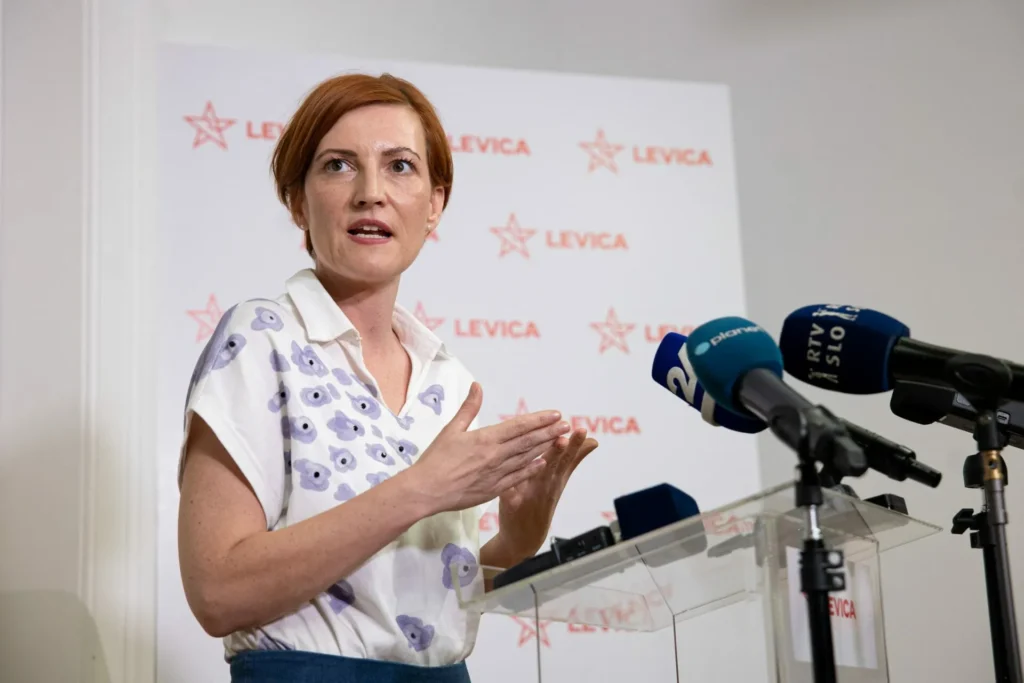In Slovenia, artists are a special caste of people, completely tied to left-wing politics and its economic hinterland. That is why – like the Yugoslav regime’s socio-political cultural workers of the time – they enjoy special privileges that ordinary people can only dream of.
We already pay their pension contributions, they apply for public tenders from which they draw millions of euros per year, the state buys their artworks, which they cannot sell on the market – and what is more, they force investors in public new buildings to buy artworks by Slovenian regime artists.
But the Ministry of Culture, under the leadership of Asta Vrečko, is not yet done handing out privileges. They have sent for public consultation a proposal for a Regulation on minimum remuneration for the self-employed in culture, which will practically put the self-employed in culture on an equal footing with employees of public cultural institutions.

While this is part of a broader amendment to the Act on the Realisation of the Public Interest in Culture (ZUIJK), which has already allowed for the payment of contributions to deserving cultural professionals, the new amendment would raise the census threshold and introduce additional benefits for the already privileged caste of the self-employed.
Eight times the payment?!
So, what does the new minimum payment regulation say? It allocates privileges, the likes of which regime-friendly media could only earn in some totalitarian systems. For example, Article 4 of the amendment stipulates that one (1) hour of work shall be used as the basic unit for the calculation of pay, while the total amount of work performed as an element of the calculation of pay may only be a multiple of that basic unit, which means, of course, that every hour is already counted as a working day! Article 5 of the amendment states that the contracting authority may not pay the contractor less than the minimum starting payment, which is eight times the minimum hourly payment, for the cultural work carried out. In other words, the regulation sets an illogically high minimum remuneration for the self-employed in the cultural sector, who carry out most of their activities in public (state) institutions, on a centrally planned basis. That is to say, any apprentice painter who is well trained in drawing red stars will be paid several times the minimum wage by the taxpayers.
The minimum hourly payment, however, depends on the type of work performed and is calculated by multiplying the amount of the net salary for the starting salary grade for a comparable post in the public sector, as laid down in Article 6 of this Regulation, per hour of average monthly full-time work, taking into account that the average monthly full-time work commitment is 174 hours, by a weighting coefficient of 1.9.
Paying eight times as much for one or two hours’ work?
With this, the Ministry is trying to cleverly put the self-employed cultural workers on an equal footing with full-time employees (mostly bureaucrats) in public cultural institutions by paying them for full-time work, even when they would only work for one or two hours.
“The new regulation being adopted today by the government and the Ministry of Culture defines for the self-employed in culture a minimum of eight times the minimum payment for the work they do, due to the “absurdity of fragmenting” their work into less than one day’s work. Does any other self-employed person in Slovenia receive as much as eight times pay for one or two hours of work?” wondered MP Andrej Hoivik of the Slovenian Democratic Party (Slovenska demokratska stranka – SDS).

These are privileges that make the payment of contributions and the payment of cultural pensions pale into insignificance. It is, in fact, a state-funded mafia “no work” scheme (where you get a fictitious job but don’t work), and even more so a “no show” scheme (where you don’t show up for work at all).
What do those at Asta Vrečko’s Ministry have to say about this?
How does the Ministry of Culture justify this bullshit? They argue that, unlike full-time employees, the self-employed in culture do not have all the benefits of an employment relationship, such as the annual leave allowance, paid transport and lunch, holidays, sick leave, etc., and that since they also pay for certain expenses that are provided to the employee by his or her employer, the regulation introduces a so-called weighting factor to ensure “real comparability of payment.” The weighting factor represents the proportionate costs incurred by the self-employed cultural worker in providing his or her working conditions (e.g. renting an office or workshop, purchasing equipment, etc.). Of course, ALL self-employed workers (sole proprietors) have the same costs, but nobody ever asks the others how they intend to cover their costs. The concept of a “weighting factor” for the self-employed in culture is a bad joke for regular sole proprietors.
They say that the regulation ensures that even small-scale or short-duration commissions are adequately compensated, and that, in practice, this will mean that a photographer will also be paid for the hours spent processing or developing photographs, in addition to the hours spent at the event; an actor will be paid for the hours spent getting his or her make up done or in rehearsal, not just on stage; a musician will be paid for soundchecks, not just performances; and so on.
Payment for non-work
Can you imagine what that means? It’s like a tiler charging a customer for the hours he or she spends in the shop paying for tiles and cement, or a plumber charging for the time they spent buying bathroom taps and water pipes. Well, there is no problem with artists anyway, because they do business with the state. In other words – artists will be financed by the taxpayers not to work. Or rather, they will be financially compensated for even more non-work than before.
I. K.


